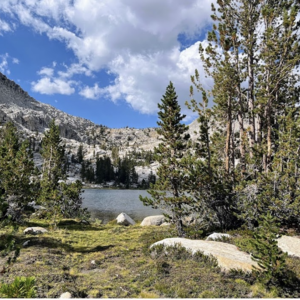You are here
The Superstition Wilderness is a federally protected region of Tonto National Forest. It encompasses approximately 160,164-acres and is managed by the United States Forest Service (USFS).
Superstition Wilderness is a rugged, unforgiving desert landscape that consists of barren mountains, deep canyons, volcanic geology, and prickly and pokey plants. This is a land of extremes, with intense heat, little shade, and little water in the summer, and bitter cold temperatures, freezing rain, and even snowstorms in the winter. Additionally, it is a land of mystery and intrigue, with many legends surrounding gold mines, secret maps, and buried treasures.
VEGETATION
The vegetation in the area is typical of the Sonoran Desert. In this region, you'll find semi-desert grassland and chaparral along with dense brush and a few areas with ponderosa pine.
THINGS TO DO
Popular activities include hiking, trail running, backpacking, rock climbing, and treasure seeking. There are approximately 180 miles of trails in the area, but they are not always well maintained. Trail quality ranges from excellent to overgrown and poor. Aside from the Peralta Trail and First Water Trail, which are the most popular trails in the area (and among the most popular in Arizona), the Wilderness area remains largely untouched.
HIGHLIGHTS
-
Weaver’s Needle: a 1,00–foot rock column, prominent landmark and distinctive peak.
-
A portion of the Arizona National Scenic Trail runs through the area.
HISTORY
The Superstition Wilderness' easiest known inhabitants were the Hohokam and Salados peoples who lived there between 800 and 1400 AD. Several villages and cliff dwellings that were established by these groups can still be found in the area today.
ELEVATION RANGE: Approximately 2,000 feet (on the western boundary) to 6,265 feet on top of Mound Mountain.
TRAILS WITHIN THE WILDERNESS
-
Jacobs Trail #58
-
Hieroglyphic Trail #101
-
Peralta Trail #102
-
Boulder Trail #103
-
Dutchman's Trail #104
-
Peter's Trail #105
-
JF Trail #106
-
Red Tanks Trail #107
-
Coffee Flat Trail #108
-
Reavis Valley Trail #109
-
Rogers Canyon Trail #110
-
Bacon Trail #111
-
Frog Trail #112
-
Woodbury Trail #114
-
Reavis Gap Trail #117
-
Fireline Trail #118
-
Two Bar Trail #119
-
Tule Trail #122
-
Bull Pass Trail #129
-
Siphon Draw Trail #153
-
Haunted Trail #203
-
West Pinto Trail #212
-
Terrapin Trail #234
-
Bluff Spring Trail #235
-
Second Water Trail #236
-
Whiskey Trail #238
-
Cavalry Trail #239
-
Black Mesa Trail #241
-
Campaign Trail #256
-
Bull Basin Trail #270
-
Paradise Trail #271
-
Spencer Trail #275
-
Cuff Bottom Trail #276
-
Plow Saddle Trail #287
-
Canyon Lake TH
-
First Water TH
-
Tortilla TH
-
Reavis TH
-
Tule TH
-
Campaign TH
-
Miles TH
-
Roger Trough TH
-
Woodbury TH
-
Peralta TH
ADDITIONAL INFORMATION
USFS - Superstition Wilderness
Logistics + Planning
Current Weather: Powered by Dark Sky
























Comments
Sign In and share them.